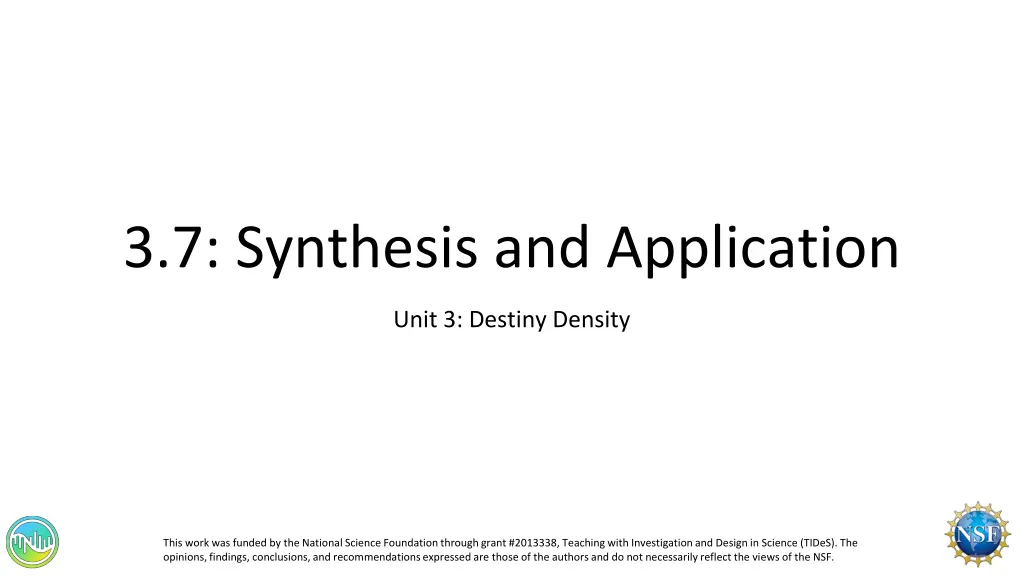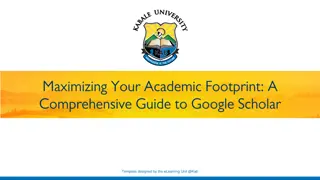
Density Concepts and Problem Solving in Science Education
Explore how density concepts are applied in problem-solving scenarios within science education. Learn about the integration of NGSS principles, real-world applications, and effective communication strategies related to density. Dive into engaging activities and assessments to enhance understanding and retention.
Download Presentation

Please find below an Image/Link to download the presentation.
The content on the website is provided AS IS for your information and personal use only. It may not be sold, licensed, or shared on other websites without obtaining consent from the author. If you encounter any issues during the download, it is possible that the publisher has removed the file from their server.
You are allowed to download the files provided on this website for personal or commercial use, subject to the condition that they are used lawfully. All files are the property of their respective owners.
The content on the website is provided AS IS for your information and personal use only. It may not be sold, licensed, or shared on other websites without obtaining consent from the author.
E N D
Presentation Transcript
3.7: Synthesis and Application Unit 3: Destiny Density This work was funded by the National Science Foundation through grant #2013338, Teaching with Investigation and Design in Science (TIDeS). The opinions, findings, conclusions, and recommendations expressed are those of the authors and do not necessarily reflect the views of the NSF.
Learning Goals Apply comprehension of density to conceptual problem solving Synthesize comprehension of NGSS principles with density concepts Apply density to real world phenomena Communicate density concept(s) at an audience appropriate level
Homework You drafted a density-related lesson plan
Hollywood & Density? Density & buoyancy concepts from this unit directly lead into our next unit: forces! Charlie and the Chocolate Factory Fizzy drink floating -> why? Carbonation (gas) -> inflation Explain the physics of what is happening using concepts you learned this unit Fizzy lifting drink scene here is another scene from the movie willy Wonka and the chocolate factory credit by paramount pictures enjoy leave comments blow
Hollywood & Density? Let s calculate it! Need to know? Air density 1.29 kg/m3 In order to float, grandpa and Charlie have to overcome a force If Grandpa weighs 70kg, what would his volume have to be to overcome the force? Set up the problem: We know mass = 70 kg Air density = 1.29 kg/m3 We want to know volume (m3)
Lets Talk Assessment Recall your measurable learning objectives Action verbs for what your students will be doing during the activity and turning in for evaluation Diagram? Experiment? Matching? Something creative?
Deliverables & Assessment A+ Think about the deliverables part of your assessment plan as a grading key The ideal example of what you would use to compare your students work to and evaluate correctness/completeness/overall grade
Think-Pair-Share How to evaluate it? Students will draw a diagram of Students will conduct an experiment of Students will complete a worksheet on Students will role play the interacting parts of .. system/cycle Students will paint a picture/write a poem representing
Assessing Through Observation What if you want to assess a presentation? Participation? Teamwork? For these, and many other types of submission (e.g. creative projects) a rubric is helpful To be consistent in your evaluation To clearly communicate your expectations
Rubrics & Assessment Your rubric should be written as a set of guidelines that you or another teacher can use to evaluate students while silently observing their classroom 4 tiers for scoring eliminates a gray area in the middle between success and failure, for example: Beginning level of understanding (e.g. getting started ) Emerging level of understanding (e.g. making progress ) Competent level of understanding (e.g. meeting expectations ) Mastery of understanding (e.g. exceeding expectations )
Rubrics & Assessment Your rubric should be written as a set of guidelines that you or another teacher can use to evaluate students while silently observing their classroom 4 tiers for scoring eliminates a gray area in the middle between success and failure, for example: Beginning level of understanding (e.g. getting started ) Emerging level of understanding (e.g. making progress ) Competent level of understanding (e.g. meeting expectations ) Mastery of understanding (e.g. exceeding expectations )
Rubrics & Assessment Always relate the rubric directly to the learning objectives! Describe each scoring level with tangible language that is either the expected language students might use in the deliverable or are specific actions the teacher can observe Getting started Making progress Meeting exp. Exceeding exp. Student is an active participant Raises hand or just jumps in without contributing anything relevant Jumps in to say something relevant or raises hand, waits to be called on but says nothing Raises hand, waits to be called on, asks relevant questions Raises hand, waits to be called on, asks questions that progress the class discussion
Lesson Plan You have already chosen an activity to use for your lesson plan, now use this time to: Workshop the assessment plan for your lesson Peer review and collaborate Do you need a rubric for your assessment? Be sure to keep in mind what the ideal completed deliverable(s) should look like and how you will use it as an answer key to evaluate your students work
Post-Activity Wrap-Up Discussion Whole class What did you learn from the exercise of writing this lesson plan? What did you learn from your peers through workshopping and critiquing as you wrote your lesson plans?






















